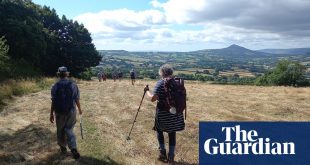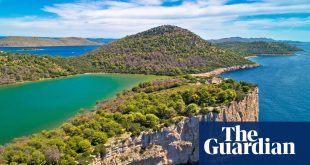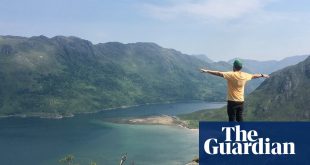The summit of Catbells – a fell in the Lake District – is a distinctive bulge that paws at the sky, before slightly drooping to one side, like the tip of a Smurf’s hat, only less severe. It’s early February when my parents and I find ourselves walking in weather typical of the Cumbrian winter; it is, mostly, gusty and wet, so my waterproof trousers balloon in the wind like a double-pronged windsock. But there are brief moments of calm, such as on our way to Maiden Moor, another fell, when we turn to look back at Catbells’ summit and see the sun momentarily overcome the cloud, illuminating the scenery around us. A rainbow manifests, then quickly fades away. It is fleeting, but beautiful.
It’s taken me over 20 years to reach this summit, thanks to a tantrum at the age of eight, some yards from the top, on my first attempt. At the time, I hated walking, and berated my parents whenever they dragged me out on to the fells at the weekend. Believing it to be the ultimate protest, I lay down on the ground, declaring I would not go any further. My family went on without me. They collected me on their way down. (My parents would like to stress that I was in sight at all times during my demonstration.)
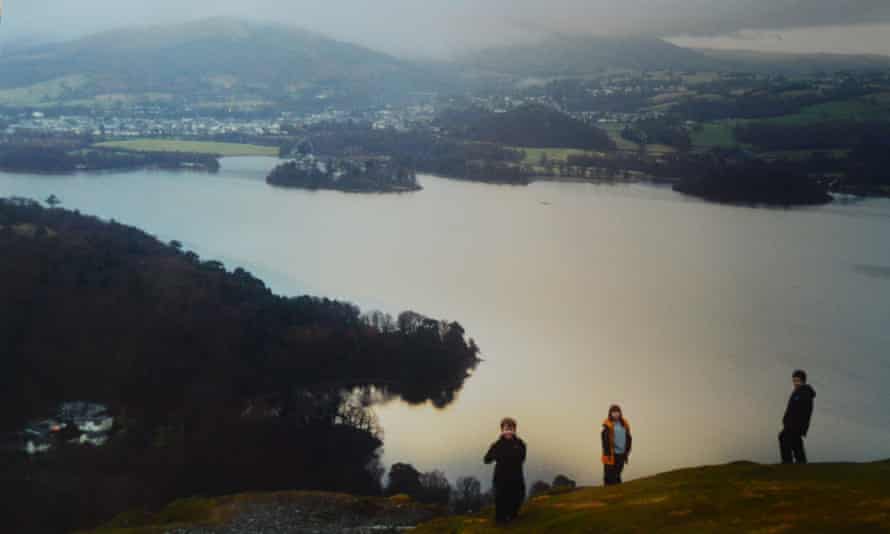
From the summit, I look back over the ridge we’ve just walked along, its grassy slopes laden with the brown fronds of dead bracken. Bassenthwaite, the Lake District’s only official lake by name, lounges in the distance. When I’m in London, where I now live, I often feel miserable in the bad weather. But here, I’m grinning in the rain. On my right lies Derwentwater, a three-mile-long expanse peppered with tiny islands, among fields, woodland and fells.
“It’s just around the corner!” my mum used to tell me, whenever I asked – yet again – how far away the summit was. “Don’t you feel a sense of achievement?” she’d puff proudly at the top, and I’d glare at her as if this person innocently dressed in Berghaus and a woolly hat was responsible for all the world’s ills. Skulking in the Lakes was a theme of my upbringing in Cumbria. I thought walking was boring and uncool, preferring trips to the cinema with friends.

When I moved to London, aged 18, I saw it as an escape. The countryside had been stifling and lonely, particularly as a teenager struggling with my sexuality. I didn’t miss it for years. Instead, I threw myself into London life: parties, new people, gay bars and, finally, things to do at the weekend.
In my early 20s, something started to shift. I think, ultimately, it took leaving for me to realise the exceptional nature of the place I’d always taken for granted. That, and I grew up a bit. London is my favourite city, but its bad parts began to grate on me. It is polluted, and expensive, and you can cry on a bus and nobody will come to comfort you. Back in the capital after the holidays, I missed the clean air, friendliness and quiet.
I began to thrive on the physical challenge of fell walking, relishing the peace that arrives after a hailstorm. I found joy in things that surprised me, like scaling a fell in thick mist only to stumble across a tarn unexpectedly, or hear a beck flowing somewhere nearby, just hidden from view. There were specific moments such as, a few years ago, when my family and I were descending Helvellyn in poor visibility and the clouds started to clear in front of us, smudging into the sunlight, like we were walking into an oil painting by Turner.
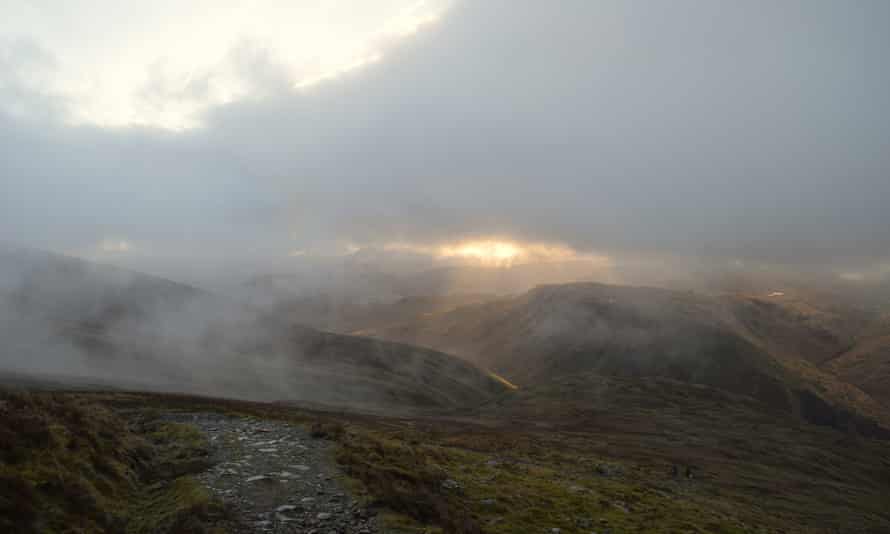
A couple of years ago, I got hiking boots for my birthday and set out to bag the Wainwrights. That is, a challenge to climb 214 peaks in the Lake District, all but one above 1,000ft (305 metres), as meticulously described by the fell walker Alfred Wainwright in his handwritten pictorial guides. So far, I’ve done 52.
Still, I used to hate those guides. When we reached a fell top, my dad would pull the book from his rucksack, reading aloud Wainwright’s reflections to my brothers and me – these range from heartfelt to cutting – adding his own terrible jokes or inserting us into the descriptions to check if we were still listening. Now, the Wainwrights are a love I share with my parents, who have completed them all. I even like it when dad reads out Wainwright from the top.
Throughout the pandemic, walking in the Lakes has made things feel more normal. In that first summer, as restrictions eased, weekends were spent ticking off Wainwrights. It was a return to my childhood, only this time I liked it: the packed lunches, pub gardens and alfresco toilet breaks with views over Buttermere. There were the navigational woes: climbing every mound and touching every cairn on a ridge to make sure you reach the true summit. (There is nothing worse than climbing a fell, with all the physical exertion that entails, only to later find out you missed the summit by a few metres.)
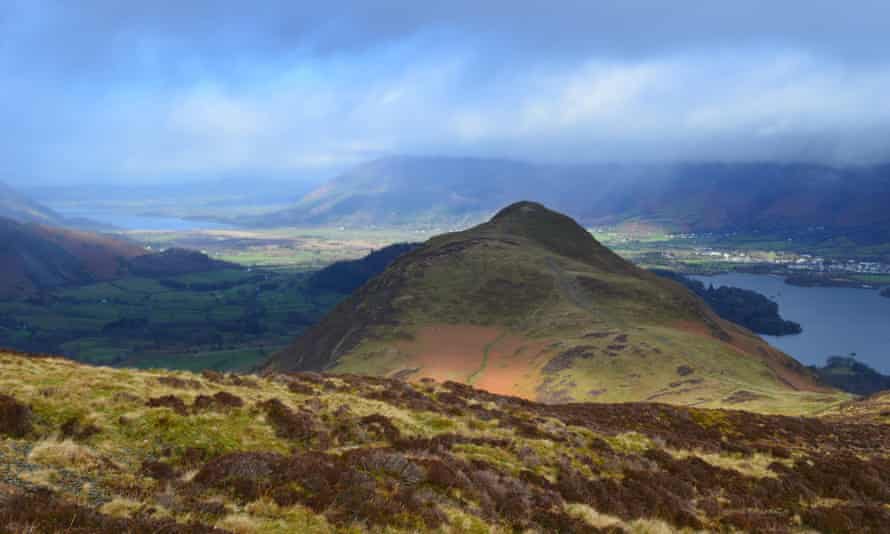
“The hills have a power to soothe and heal which is their very own,” said Wainwright. When I’m mired in anxiety or consumed with depression, fell walking can seem counterintuitive – especially if it’s raining. But I always feel better afterwards. If bad things happen in my life, or I feel it’s just stagnating, walking gives me a simple purpose: to get from one point to another, or back to the start again. More than once, it’s hauled me out of a rut. If nothing else, it is a distraction: heartbreak is harder to be sad about when you’re keeled over and exhausted on the steep slopes of Skiddaw. (As Wainwright said of another fell: “One can forget even a raging toothache on Haystacks.”)
The Lakes have been my constant, through the best and worst times in my life. I’ve devoured cheese-and-pickle sandwiches on a sunny High Pike summit while completely in love. I’ve also sat, cradling my knees, looking over Windermere from Orrest Head, where Wainwright famously fell in love with the Lakes, on the anniversary of a friend’s death.

As a landscape, it ranges from astoundingly beautiful to bleak, even dangerous. You can stroll under clear blue skies, casually admiring the Herdwick sheep, purple heather and scree, only to find yourself suddenly plunged into a thunderstorm. (If you do go fell walking, make sure you check the forecast and wear proper gear.) It is inspiring – a catalyst for conversations with family, friends and strangers. Perhaps most importantly, walking here is a huge privilege.
There are no tantrums any more. Last month, I was sitting on top of Arnison Crag with my mum, eating satsumas and drinking tea from a flask in the winter drizzle. It is a small fell, not particularly impressive when pitted against the big guns of Scafell Pike or Blencathra. But it reminded me of how I’ve grown to love something in a way that continues to surprise me. With Ullswater stretched out below us, I felt calm, happy and brimming – like my mum always said – with a sense of achievement.
Ella’s favourite routes so far
Blencathra
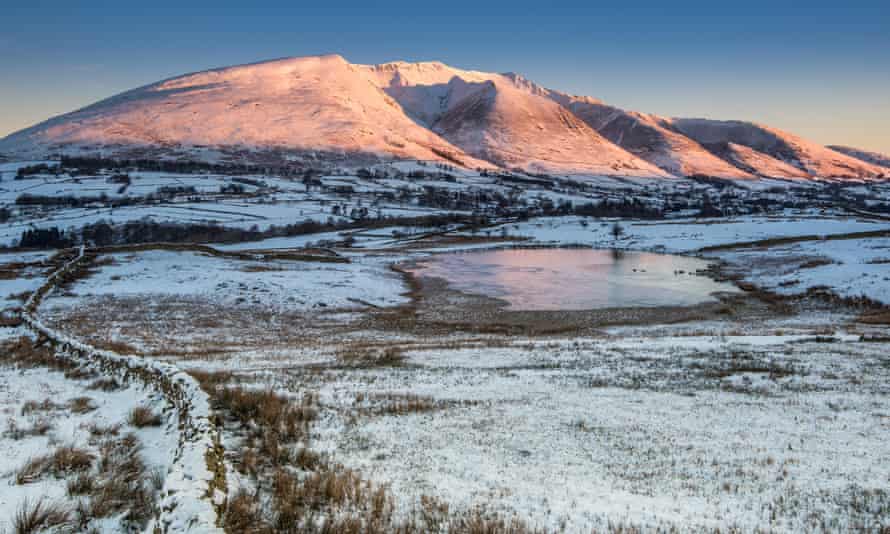
Blencathra, my favourite mountain for its fantastic views, is also known as Saddleback for the distinctive shape of its summit, a name my parents like to shout excitedly when they spot it from the A66 going towards Keswick. From this road, the peak looks magnificent, particularly when the top is dusted with snow. It actually has six summits, the highest being Hallsfell Top, with Wainwright recording more ascents up this fell than any other. These include Sharp Edge, overlooking Scales Tarn, a knife-edged ridge only to be attempted in good conditions and even then with care. The White Horse Inn at the base of Blencathra is worth a visit afterwards.
Coledale Horseshoe
One of my happiest memories is doing this more than nine-mile route, bagging seven Wainwrights, on an unseasonably hot day with my parents in September 2020. Also known as the Coledale Round, it was a long slog, sweaty and draining, but it was a welcome holiday from the seemingly never-ending terrors of Covid-19 in which we were engulfed at the time. Once down, we had a great meal at the nearby Coledale Inn, sitting outside in the day’s last sunlight.
Holme Fell
I did this fell on a sunny day with my mum a few years ago. It was a turning point for me as it was here that I fell in love with walking in the Lakes. We climbed it because, on her first attempt, mum accidentally didn’t reach the true summit on the southern end (she went to a second top instead, Ivy Crag, which somewhat misleadingly boasts a large cairn). It’s a dinky hill, just 317 metres in height, but despite its size, it commands impressive views over Coniston Water. Chesters by the River, a modern cafe now firmly on the tourist trail, is a 10-minute drive away.
 Top Naija News: Nigerian News, Breaking News Nigeria and World News Top Naija News is a daily news publication in Nigeria, delivering the latest breaking news in Nigeria and around the world.
Top Naija News: Nigerian News, Breaking News Nigeria and World News Top Naija News is a daily news publication in Nigeria, delivering the latest breaking news in Nigeria and around the world.
